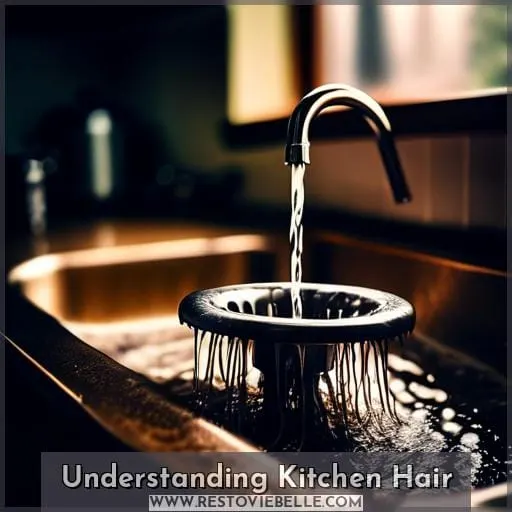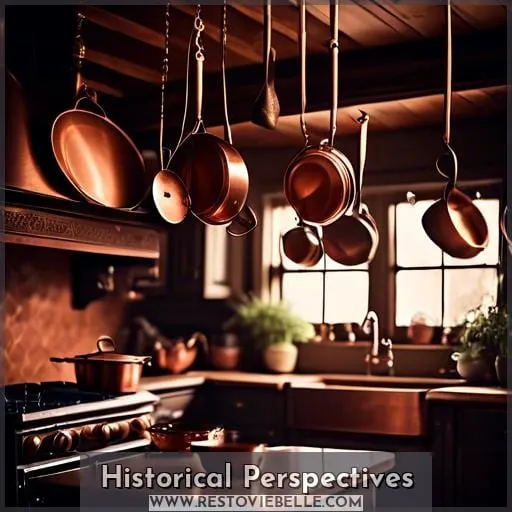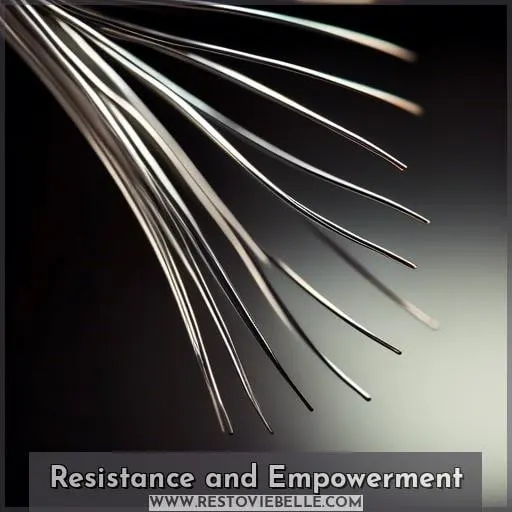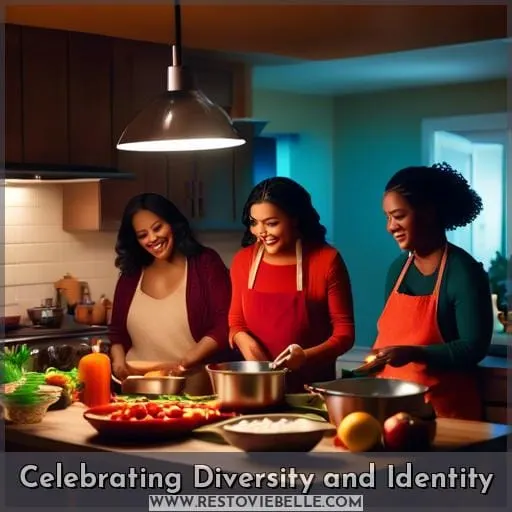This site is supported by our readers. We may earn a commission, at no cost to you, if you purchase through links.
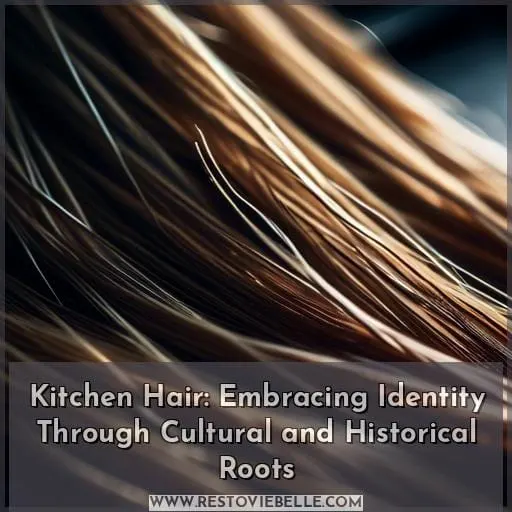 Nearly 65% of African American women have embraced their natural hair texture in recent years, signaling a shift towards authenticity and self-acceptance.
Nearly 65% of African American women have embraced their natural hair texture in recent years, signaling a shift towards authenticity and self-acceptance.
Your kitchen hair, the unique, tightly coiled strands at the nape of your neck, embodies more than just hair; it’s a testament to resilience, culture, and history.
This article delves into the roots of kitchen hair, exploring its cultural significance, historical challenges, and the empowerment it brings.
From the beauty standards of the 1950s to the influence of the Black Power Movement, we’ll uncover how kitchen hair has evolved into a symbol of pride and identity.
Join us in celebrating the diversity and richness of kitchen hair, as we advocate for self-acceptance and honor our heritage.
Table Of Contents
- Key Takeaways
- Understanding Kitchen Hair
- Historical Perspectives
- Resistance and Empowerment
- Transitioning and Care Techniques
- Celebrating Diversity and Identity
- Frequently Asked Questions (FAQs)
- How does the term kitchen relate to other cultural hair terms and their origins within the African American community?
- What are the psychological impacts of hair straightening rituals on black women, particularly regarding the kitchen area?
- How have modern hair care products and techniques evolved to better accommodate the unique needs of kitchen hair textures?
- In what ways has the natural hair movement influenced perceptions and acceptance of kitchen hair among younger generations?
- Can the concept of kitchen hair be found in other cultures, and if so, how is it perceived and managed differently?
- Conclusion
Key Takeaways
- Kitchen hair refers to the tightly coiled, resistant hair at the nape of the neck, symbolizing a rich cultural history and journey towards self-acceptance among Black women.
- The term kitchen originated in the 1950s and 1960s, reflecting societal standards and resistance against assimilation, becoming a symbol of Black beauty and empowerment during the Black Power Movement.
- Kitchen hair carries metaphorical meanings in Black culture, representing a battleground against oppressive beauty standards and a space of empowerment and resistance, embodying resilience and defiance against oppressive beauty norms.
- Embracing kitchen hair challenges societal norms, redefines beauty standards, and serves as a declaration of independence from white beauty standards, marking a pivotal moment in the journey towards self-love and cultural affirmation.
Understanding Kitchen Hair
You’ve likely heard the term kitchen in relation to hair, but it’s more than just a casual nickname.
It’s a nod to the hair at the nape of the neck, known for its resistance to straightening and its tight curls, reflecting a rich cultural history.
Embracing kitchen hair is a journey of self-acceptance, tying personal identity to broader historical and metaphorical meanings.
Origin and Cultural Context
The term kitchen in the context of hair, particularly among Black women, has deep historical roots and cultural significance. It’s not just a part of the body; it’s a symbol of societal standards, social resistance, and cultural identity.
Originating in the 1950s and 1960s, kitchen refers to the hair at the nape of the neck, known for being the most rebellious, with the nappiest, curliest, and kinkiest texture. This area has been a site of both struggle and empowerment, resisting the oppressive beauty standards imposed by white society.
Over time, as the Black Power Movement gained momentum, the kitchen became a proud emblem of Black beauty, self-acceptance, and resistance against assimilation. It’s a testament to the resilience of Black women, who’ve navigated the complexities of hair politics with grace and strength, turning what was once deemed unacceptable into a source of pride and a declaration of identity.
Metaphorical Meanings
In the rich tapestry of black culture, the kitchen carries profound metaphorical meanings. It weaves together history, stereotypes, and a journey towards self-acceptance. This term, rooted in the 1950s and 1960s, originally described the nappiest, most resistant hair at the nape of the neck.
Yet, beyond its physical attributes, the kitchen symbolizes a battleground against oppressive beauty standards. It is a space where black women and men have fought for the right to embrace their natural hair texture.
It’s a testament to resilience, where kitchen care and styling become acts of defiance against societal norms.
Embracing the kitchen with pride and confidence reflects a deeper acceptance of one’s heritage. It turns what was once deemed unruly into a celebrated expression of identity. Silk scarves, careful pressing, and nurturing products aren’t just tools for managing edges and kitchens; they’re instruments of liberation.
They help to reclaim a narrative steeped in discrimination and transform it into one of empowerment and self-love.
Historical Perspectives
In the 1950s and 1960s, beauty standards heavily favored straight hair, pressuring many in the Black community to alter their natural hair texture to feel accepted and valued.
This era set the stage for the Black Power Movement, which emerged as a transformative force, encouraging Black men and women to embrace their natural hair as a form of resistance against societal norms and an assertion of racial pride.
This historical backdrop not only highlights the struggle for acceptance of natural hair but also marks the beginning of a journey towards self-love and cultural affirmation within the Black community.
1950s and 1960s Beauty Standards
In the 1950s and 1960s, beauty standards were heavily influenced by white ideals, pushing many in the Black community to straighten their hair to fit in.
Yet, as the Black Power movement gained momentum, a shift occurred. Embracing natural styles became a form of resistance and empowerment. Icons like Chime Edwards and movements celebrated by Nikki Walton championed this change, advocating for the beauty of natural hair.
This era marked a pivotal moment, as afro picks and leave-in conditioners became symbols of pride, challenging the status quo and redefining Black standards within a historical context.
Influence of the Black Power Movement
As the 1950s and 1960s beauty standards began to wane under the influence of the Black Power Movement, a profound shift took place.
This era wasn’t just about civil rights; it was about reclaiming identity and celebrating blackness in its most natural form. The movement brought empowerment and resistance to the forefront, challenging the prevailing norms that dictated how black people should wear their hair.
It was a time when curly, transitioning hair wasn’t just seen but embraced as a symbol of pride and self-acceptance. The cultural context of this period was rich with historical perspectives that highlighted the beauty of black features, including the most rebellious kinks at the nape of the neck—affectionately known as the kitchen.
This was more than a fashion statement; it was a declaration of independence from white beauty standards, a step towards full liberation.
Resistance and Empowerment
In the realm of black women’s hair, the term kitchen carries a profound significance, embodying both a site of resistance and a symbol of empowerment.
This area of hair, often seen as the most rebellious and resistant to change, has historically been a point of contention, subjected to harsh treatments in an attempt to conform to mainstream beauty standards.
Yet, it stands as a testament to resilience and defiance, a reminder of the strength and beauty inherent in embracing one’s natural hair texture and identity.
Kitchen as a Site of Resistance
As you’ve learned about the historical context of kitchen hair, you’ve seen how it’s been a symbol of cultural identity and black pride. This term, rooted in resistance, refers to the hair at the nape of the neck, which often defies straightening by a hot comb.
It’s a testament to resilience, where even the most determined efforts by white beauty standards have failed to tame it.
Kitchen hair stands as a proud emblem of unassimilable African heritage, celebrated by figures like Harvard intellectuals and YouTube vloggers alike. It’s a part of you that resists assimilation, a permanent and invincible kink that embodies defiance and strength.
Symbolism in Hair Styling Choices
Your hair styling choices are more than just a fashion statement; they’re a powerful expression of your identity and cultural heritage.
- Embrace your kitchen as a symbol of diversity, celebrating the unique textures that defy conventional standards.
- Recognize the kitchen’s role in resistance, standing strong against pressures to conform to certain beauty ideals.
- See your hair care routine, whether using a hair dryer or transitioning hair techniques, as an act of empowerment.
- Let your kitchen reflect your pride in your culture, as it carries the resilience of generations and the spirit of innovation.
Transitioning and Care Techniques
As you embark on the journey of transitioning from chemically treated to natural hair, it’s crucial to understand the importance of managing your edges and kitchen hair.
These areas are often the most delicate and require special attention to ensure a smooth transition.
Embracing the natural hair movement not only involves adopting new hair care techniques but also signifies a deeper connection with your cultural and historical roots.
Managing Edges and Kitchen Hair
As you embrace your natural hair journey, it’s crucial to understand the cultural implications and historical context of kitchen terminology.
Your kitchen—the most rebellious kinks at the nape of your neck—may require extra care. Styling techniques for these areas include using leave-in conditioner, gel, and wrapping with a silk scarf overnight to ensure smoothness.
For product recommendations, opt for quality gels that won’t flake and ensure your hair is fully dry to avoid the formation of a mini fro.
Embrace these practices as a celebration of your heritage and a step towards self-acceptance.
Role of Natural Hair Movement
The Natural Hair Movement has been a powerful force in promoting Black pride, identity acceptance, and cultural significance.
It’s a response to historical contexts where Black hair was often seen as needing to conform to Eurocentric beauty standards. This movement encourages individuals of African descent to embrace their natural hair textures, challenging the negative perceptions and societal pressures to alter their hair.
It’s not just about hair; it’s a statement of self-love, resilience, and defiance against oppression. By celebrating natural kinks, coils, and curls, the movement fosters a sense of community and empowerment, urging a reevaluation of what constitutes beauty and pushing for broader acceptance and representation of natural Black hair in all spaces.
Celebrating Diversity and Identity
In today’s society, embracing the unique textures and styles of kitchen hair is more than a trend; it’s a celebration of diversity and identity.
You’re not just styling your hair; you’re making a statement about self-acceptance and pride in your cultural roots.
This shift towards celebrating every curl and kink represents a powerful move away from outdated beauty standards, encouraging everyone to love their natural self.
Kitchen Hair in Modern Society
In today’s society, kitchen hair isn’t just a term—it’s a celebration of cultural identity and diversity. You’re part of a movement that embraces personal experiences and hair care practices as forms of self-expression and cultural representation.
- Kitchen hair symbolizes a rich heritage and the resilience of black women who’ve turned hair care into an art form.
- Personal experiences with kitchen hair weave stories of struggle, beauty, and pride into the fabric of black culture.
- Social implications of embracing kitchen hair reflect a broader acceptance and understanding of diverse beauty standards.
Embrace your kitchen hair as a testament to your unique story and the shared history that it represents.
Advocacy for Self-Acceptance
Embrace your kitchen hair, a testament to black pride and cultural identity, rooted in historical context.
It’s a symbol of self-acceptance, defying outdated beauty standards. Celebrate your unique texture, a resilient part of your heritage that stands strong against assimilation.
Let your hair be a proud declaration of self, unapologetically reflecting the spirit of resistance and empowerment.
Frequently Asked Questions (FAQs)
How does the term kitchen relate to other cultural hair terms and their origins within the African American community?
The term kitchen connects deeply with African American cultural identity. It symbolizes resistance to conforming to white beauty standards. It’s a proud nod to heritage amidst a history of oppression and resilience, much like other culturally significant hair terms.
What are the psychological impacts of hair straightening rituals on black women, particularly regarding the kitchen area?
Hair straightening rituals, particularly in the kitchen area, can lead to emotional distress and a sense of oppression. These rituals often stem from societal pressures to conform to Eurocentric beauty standards.
How have modern hair care products and techniques evolved to better accommodate the unique needs of kitchen hair textures?
Today’s hair care products and techniques have evolved to embrace and nourish kinky hair textures. They focus on hydration, strength, and versatility. Innovations include targeted leave-in conditioners, gels, and protective styling methods.
In what ways has the natural hair movement influenced perceptions and acceptance of kitchen hair among younger generations?
Isn’t it empowering how the natural hair movement has reshaped beauty norms?
Younger generations now embrace kinky hair, celebrating its unique texture as a symbol of cultural pride and self-acceptance.
Can the concept of kitchen hair be found in other cultures, and if so, how is it perceived and managed differently?
In various cultures, hair at the nape, akin to kitchen hair, is managed uniquely, often reflecting societal norms and beauty standards. Some cultures embrace natural textures, while others alter them through styling or treatments.
This diversity showcases the intricate relationship between hair and cultural identity.
Conclusion
To truly grasp the essence of identity and heritage, one must acknowledge the intricate beauty of kitchen hair. Like a tapestry woven with resilience and history, kitchen hair symbolizes a journey of self-acceptance and empowerment.
From its cultural roots to modern-day advocacy, embracing kitchen hair transcends mere aesthetics; it embodies a celebration of diversity and a testament to the richness of individual identity.
Embrace your kitchen hair as a badge of honor, reflecting pride in your unique cultural heritage.

